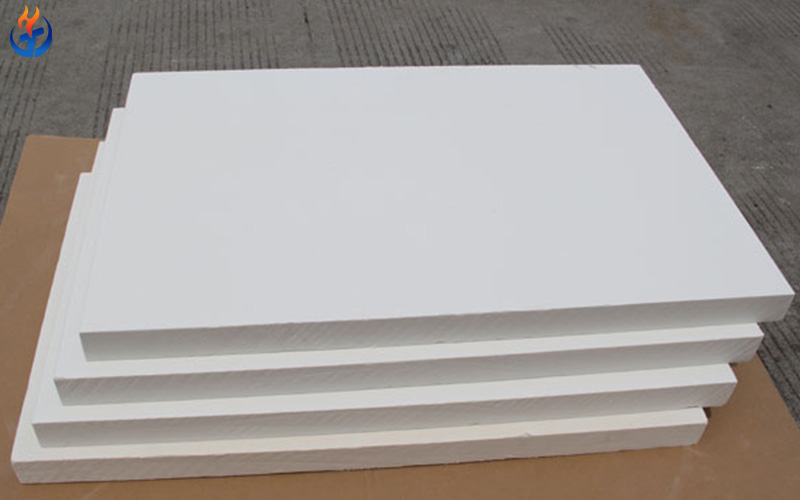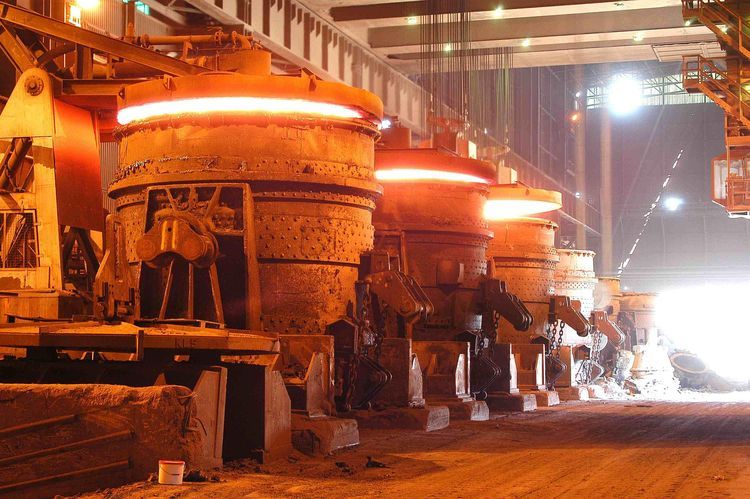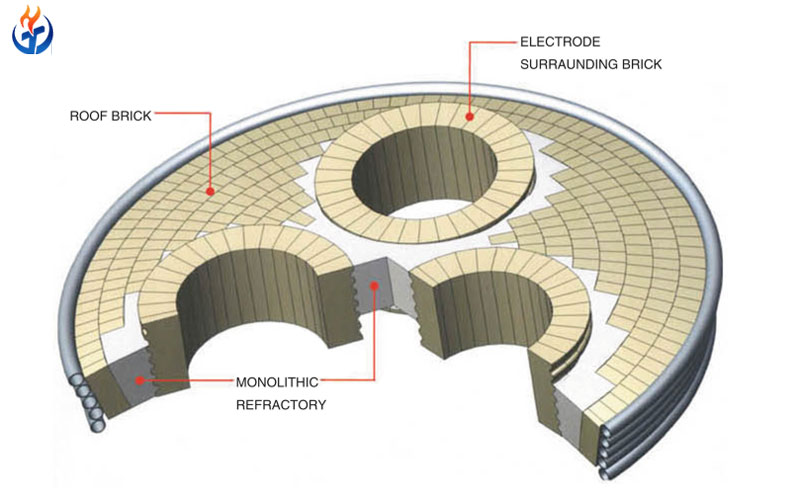In high-temperature industries such as ceramics, metallurgy, glass, and heat treatment, efficient insulation and energy conservation are key to maintaining product quality and reducing operational costs. Among various refractory insulation materials, ceramic fiber boards have become an essential choice for kiln insulation due to their excellent thermal performance, lightweight structure, and easy installation. This article explores the application of ceramic fiber boards in kilns, their properties, advantages, and how they contribute to improving furnace efficiency.

What Is a Ceramic Fiber Board?
A ceramic fiber board is a rigid insulation product made from high-purity alumina-silicate fibers and binding agents. It is vacuum-formed into panels that can withstand continuous high temperatures while maintaining structural integrity. Depending on the composition, ceramic fiber boards can resist temperatures ranging from 1000°C to 1800°C (1832°F to 3272°F), making them ideal for use in kilns, furnaces, and other thermal equipment.
The main components of ceramic fiber boards include:
Alumina (Al₂O₃) and silica (SiO₂) – provide thermal stability and strength
Organic binders – improve mechanical properties at room temperature
Inorganic additives – enhance resistance to shrinkage and erosion
After installation, the organic content burns out during the initial heating cycle, leaving a stable, lightweight structure that retains insulation performance even under harsh thermal conditions.
Importance of Kiln Insulation
Kilns are specialized heating chambers used for firing ceramics, calcining materials, sintering metals, and various other high-temperature processes. The temperature inside a kiln can range from 800°C to over 1600°C, depending on the material being processed. At these temperatures, heat loss through the walls, roof, and doors can lead to:
Higher energy consumption
Uneven temperature distribution
Reduced product quality
Increased operational costs
Therefore, effective kiln insulation is essential to minimize heat loss, maintain temperature uniformity, and ensure stable performance. Traditional insulation materials like refractory bricks and castables have been used for decades, but modern ceramic fiber boards offer much better energy efficiency and faster installation.
Advantages of Ceramic Fiber Boards in Kilns
(1) Excellent Thermal Insulation
Ceramic fiber boards have extremely low thermal conductivity, typically 0.08–0.16 W/m·K at 800°C, which is significantly lower than that of fire bricks or castables. This ensures minimal heat transfer through the kiln walls, improving thermal efficiency and reducing fuel consumption.
(2) Lightweight Structure
The density of a ceramic fiber board is only 200–400 kg/m³, which is about one-tenth the weight of traditional refractory bricks. This not only reduces the overall weight of the kiln but also allows for quicker heat-up and cool-down cycles, increasing production efficiency.
(3) High Temperature Resistance
Depending on the grade, ceramic fiber boards can be used continuously up to 1260°C (standard type), 1430°C (high alumina type), or even 1800°C (zirconia type). This versatility allows them to be applied in different kiln zones such as preheating, sintering, and cooling sections.
(4) Dimensional Stability and Strength
Unlike soft fiber blankets, ceramic fiber boards retain their shape under compression and vibration. They are rigid, cuttable, and can be mechanically fastened, making them ideal for lining walls, doors, and roofs where structural integrity is required.
(5) Quick Installation and Maintenance
Boards can be easily cut and shaped with simple tools. Installation is clean and rapid compared with bricklaying or castable curing. When maintenance is required, damaged boards can be replaced individually without dismantling large sections of the lining.
(6) Chemical and Thermal Shock Resistance
Ceramic fiber boards resist oxidation, most acids, and alkalis (except hydrofluoric and phosphoric acids). They also perform well under rapid temperature fluctuations, which is especially useful for kilns that experience frequent start-ups or temperature cycles.
Comparison with Traditional Refractory Materials
| Property | Ceramic Fiber Board | Fire Brick | Castable Refractory |
|---|---|---|---|
| Density | Very low (200–400 kg/m³) | High (1800–2500 kg/m³) | Medium (1500–2200 kg/m³) |
| Thermal Conductivity | Very low | High | Moderate |
| Heat Storage | Minimal | Large | Moderate |
| Installation | Fast & easy | Slow bricklaying | Requires curing |
| Energy Saving | Excellent | Moderate | Moderate |
| Cost Efficiency | High (long-term) | Moderate | Moderate |
This comparison clearly shows why many kiln operators are replacing traditional linings with ceramic fiber insulation systems. Although the initial cost of ceramic fiber boards may be slightly higher, the long-term savings in energy and maintenance more than justify the investment.
Energy Efficiency and Environmental Benefits
Using ceramic fiber boards in kiln insulation offers multiple environmental advantages:
Reduced fuel consumption: Lower thermal mass and high insulation efficiency cut fuel use by 20–40%.
Lower CO₂ emissions: Energy savings directly contribute to reducing greenhouse gas emissions.
Shorter start-up times: Less heat is wasted on warming heavy refractory walls, allowing faster production cycles.
Extended kiln life: Stable thermal conditions and minimal thermal stress protect the kiln shell and refractory lining.
In an era where sustainability is increasingly important, ceramic fiber boards are a smart solution for greener kiln operations.
Installation Guidelines for Kiln Insulation
Proper installation of ceramic fiber board insulation ensures long-lasting performance. Key recommendations include:
Preparation: Ensure the kiln shell is clean, dry, and free of oil or dust before installation.
Cutting: Use a sharp utility knife or saw to cut the board to the required size.
Fixing: Boards can be attached with ceramic anchors, refractory cement, or mechanical fasteners depending on design.
Joints: Keep joints tight and staggered to reduce heat leakage.
Dry-out: After installation, perform a controlled heating cycle to remove any residual moisture or organic binders.
Following these steps ensures the insulation remains effective and durable under continuous high-temperature conditions.
Conclusion
The application of ceramic fiber boards in kilns has revolutionized thermal insulation in high-temperature industries. With their combination of lightweight design, low thermal conductivity, high temperature resistance, and easy installation, ceramic fiber boards provide a modern, energy-efficient solution for kiln insulation.
Whether used in ceramic firing, glass melting, or metal heat treatment, these boards offer exceptional performance, longer service life, and substantial energy savings. As industries continue to focus on efficiency and sustainability, ceramic fiber boards will remain one of the most important materials for kiln insulation worldwide.



